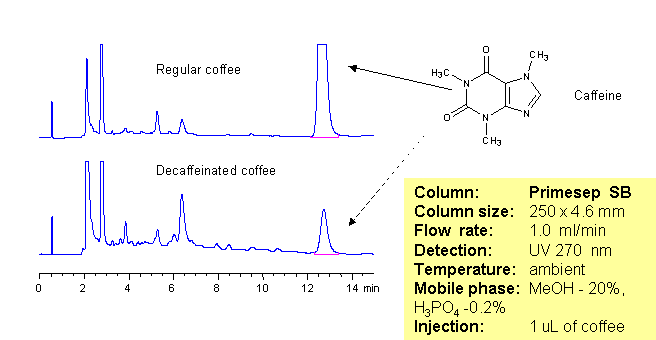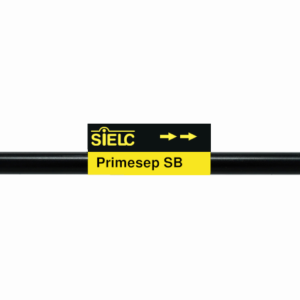Applications:
HPLC Separation of Coffee
November 6, 2006

The amount of caffeine in regular and decaffeinated coffee can be determined using a Primesep SB column. The HPLC method combines reversed-phase and polar interactions to elute caffeine without interference from the coffee complex mixture. This method can be made even more robust by incorporating a diverter valve and a guard column to prevent late eluting components from sticking to the Primesep SB column. The sample is injected onto the guard column and after a defined time point, the eluent flow is reversed to elute the caffeine peak onto the analytical column without the late eluters that can shorten column life. The HPLC separation uses a mobile phase of water, methanol (MeOH) and phosphoric acid (H3PO4) and UV detection at 270 nm.
Application Column
Primesep SB
The Primesep family of mixed-mode columns offers a wide variety of stationary phases, boasting unprecedented selectivity in the separation of a broad array of chemical compounds across multiple applications. Corresponding Primesep guard columns, available with all stationary phases, do not require holders. SIELC provides a method development service available to all customers. Inquire about our specially-tailored custom LC-phases for specific separations.
Select optionsDecaffeinated Coffee
Regular Coffee



